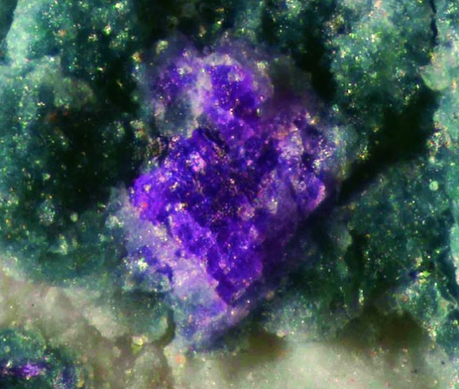
It's purple, translucent and goes by "putnisite." Discovered in Western Australia, putnisite contains the unusual elemental combination of strontium, calcium, chromium, sulphur, carbon, oxygen and hydrogen and is notable for its dissimilarity from other, known families of minerals.
Salon.com explains,
It’s purple and pretty and composed of cube-like crystals just 0.5 mm in size. But what really makes putnisite, the world’s newest mineral, truly unique is that nothing like it has ever been discovered before. “Most minerals belong to a family or small group of related minerals, or if they aren’t related to other minerals they often are to a synthetic compound, but putnisite is completely unique and unrelated to anything,” said Dr. Peter Elliott, lead author of a new study detailing the discovery in Mineralogical Magazine. ... Putnisite is named after German mineralogists Andrew and Christine Putnis for their contributions to mineralogy. What’s got scientists so intrigued by the mineral is its composition. It’s a rare combination of strontium, calcium, chromium, sulphur, carbon, oxygen and hydrogen that’s completely distinct from any of the other 4,000 known minerals in the world.
I love science. But I know Who the author of science is, God. He made the earth and everything in it. (Genesis 1:1, Acts 17:24, Hebrews 1:10). Jesus sustains it. (Hebrews 1:3). Insofar as man can, with his limited mental faculties (compared to God's), he strives to discover his origins and learn about this creation in which we dwell.
For what can be known about God is plain to them, because God has shown it to them. For his invisible attributes, namely, his eternal power and divine nature, have been clearly perceived, ever since the creation of the world, in the things that have been made. So they are without excuse. (Romans 1:19-20)
I love minerals. In Maine, as with many other states, there is a Mineralogical Society. Membership allows us entry to mining sites where the owners allow us to sift through their tailings. We often went on weekend expeditions with shovel and chisel and bucket in hand, to explore and try to find amethyst, quartz, tourmaline, beryl, and other gems hidden in the earth. In Maine you can also pan for gold, it exists in the rivers. But it was always too cold for us, so we usually only went on the rock hunting expeditions. Here are a few samples of some of the minerals we found.
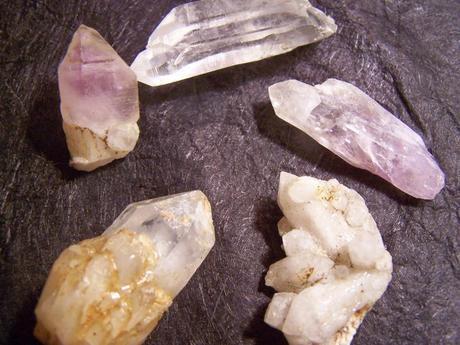

These are some of the things we found on the Woodward Ranch.
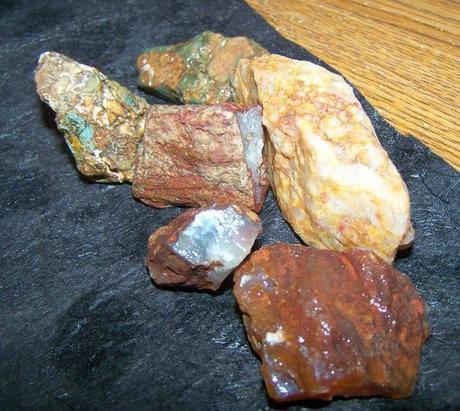
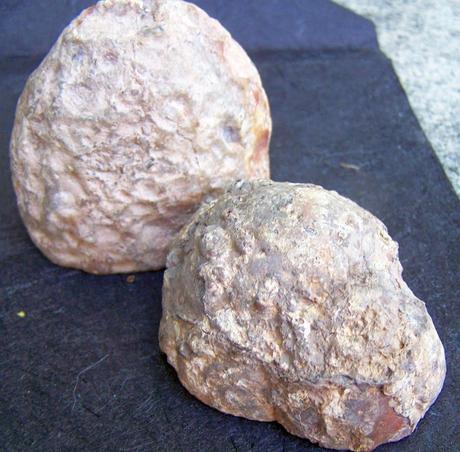
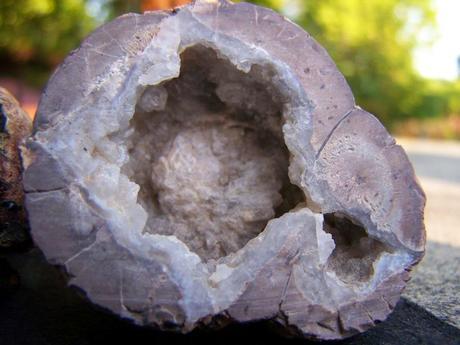
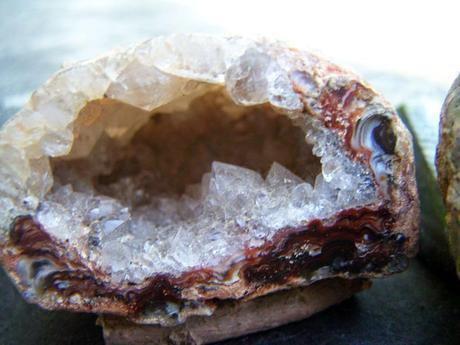
In Jasper Beach, Maine there are a billion billion jasper and rhyolite stones, tumbled to a smooth sheen and glistening in the Atlantic waters at the edge of a totally stone beach.
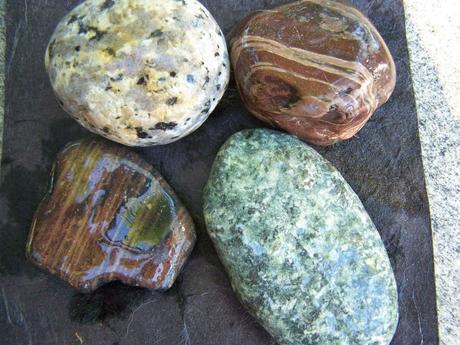
Weather.com had an interesting list of the "8 Biggest Mysteries of Our Planet"
1. Why are we all wet? Scientists think Earth was a dry rock after it coalesced 4.5 billion years ago. So where did this essential chemical, H2O, come from?
2. What's down there in the core? The stuff of legend and lore, Earth's core has long fascinated writers as well as scientists. For a while, the composition of Earth's unreachable core was a solved mystery -- at least in the 1940s. With meteorites as proxy, scientists gauged the planet's original balance of essential minerals, and noted which were missing. The iron and nickel absent in Earth's crust must be in the core, they surmised. But gravity measurements in the 1950s revealed those estimates were incorrect. The core was too light. Today, researchers continue to guess at which elements account for the density deficit beneath our feet.
3. How did the moon get here? Did a titanic collision between the Earth and a Mars-size protoplanet form the moon? There's no universal consensus on this giant impactor theory, because some details don't pan out.
4. Where did life come from? Was life brewed on Earth or sparked in interstellar space and delivered here on meteorites? The most basic life components, such as amino acids and vitamins, have been found on ice grains inside asteroids and in the most extreme environments on Earth. Figuring out how these parts combined to form the first life is one of biology's biggest hurdles...[and a link brings you to the 7 theories on how life began...and so on and et cetera, always learning yet never above to come to knowledge of the truth...]
5. Where did all the oxygen come from? Understanding the shift to an oxygen-rich Earth is a key factor in decoding the history of life on our planet.
6. What caused the Cambrian explosion? The appearance of complex life in the Cambrian, after 4 billion years of Earth history, marks a unique turning point, said Donna Whitney, a geologist at the University of Minnesota. Suddenly there were animals with brains and blood vessels, eyes and hearts, all evolving more quickly than during any other planetary era known today. [For another take on a biblical explanation for the Cambrian explosion, see below]
7. When did plate tectonics start? Thin plates of hardened crust knocking about Earth's surface make for beautiful mountain sunsets and violent volcanic eruptions. Yet geologists still don't know when the plate tectonics engine revved up. [The FLOOD. Genesis 7:6, Genesis 10:25]
8. Will we ever predict earthquakes? At best, statistical models can tease out a forecast of future earthquake probability, similar to weather experts who warn of coming rain. But that hasn't kept people from trying to predict when the next one will hit -- with no success. [Prediction: There will be an earthquake in Jerusalem killing 7000 and a tenth of the city will collapse. This will happen the same hour the Two Witnesses are resurrected and ascend to heaven. Revelation 11:13.]
A summary of flood geology
Other creationists accept the existence of the geological column and believe that it indicates a sequence of events that might have occurred during the global flood. Institute for Creation Research creationists such as Andrew Snelling, Steven A. Austin and Kurt Wise take this approach, as does Creation Ministries International. They cite the Cambrian explosion — the appearance of abundant fossils in the upper Ediacaran (Vendian) Period and lower Cambrian Period — as the pre-Flood/Flood boundary, the presence in such sediments of fossils that do not occur later in the geological record as part of a pre–flood biota that perished and the absence of fossilized organisms that appear later (such as angiosperms and mammals) as due to erosion of sediments deposited by the flood as waters receded off the land. Creationists say that fossilization can only take place when the organism is buried quickly to protect the remains from destruction by scavengers or decomposition. They say that the fossil record provides evidence of a single cataclysmic flood and not of a series of slow changes accumulating over millions of years.
Here are some fossils I found beautiful:
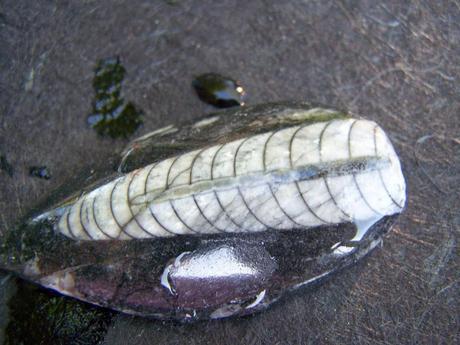
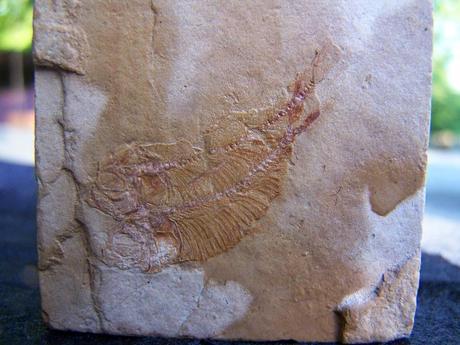
It's fun to speculate on the earth's mysteries. It was a blast looking for minerals in western Maine, in Downeast Maine, in Texas, and all the other places we searched, looking for clues as to how the earth works. We loved to unearth its beauty- literally.
Please note that for the born again Christian the scientific mysteries are different than the mysteries the unsaved scientist will ponder. If one does not have God as the first cause, one will always wonder about the ensuing causes. So, another new mineral was discovered, and scientists cannot figure out why it is unrelated to any other mineral... When this happens they begin to reassess once again what they know, and what they don't know. I'm glad I know what I know. God created the heavens and the earth...
And the minerals that we know, like gold and pearl, we will see in heaven and they will be beautiful. (Revelation 21:19-21). The minerals we don't know but we will discover in heaven will be beautiful also. But the most beautiful gem of all, in the entire universe, is Jesus.
And he carried me away in the Spirit to a great, high mountain, and showed me the holy city Jerusalem coming down out of heaven from God, having the glory of God, its radiance like a most rare jewel, like a jasper, clear as crystal. ... And the city has no need of sun or moon to shine on it, for the glory of God gives it light, and its lamp is the Lamb. (Revelation 21:10-11, 23)
Salon.com explains,
It’s purple and pretty and composed of cube-like crystals just 0.5 mm in size. But what really makes putnisite, the world’s newest mineral, truly unique is that nothing like it has ever been discovered before. “Most minerals belong to a family or small group of related minerals, or if they aren’t related to other minerals they often are to a synthetic compound, but putnisite is completely unique and unrelated to anything,” said Dr. Peter Elliott, lead author of a new study detailing the discovery in Mineralogical Magazine. ... Putnisite is named after German mineralogists Andrew and Christine Putnis for their contributions to mineralogy. What’s got scientists so intrigued by the mineral is its composition. It’s a rare combination of strontium, calcium, chromium, sulphur, carbon, oxygen and hydrogen that’s completely distinct from any of the other 4,000 known minerals in the world.
I love science. But I know Who the author of science is, God. He made the earth and everything in it. (Genesis 1:1, Acts 17:24, Hebrews 1:10). Jesus sustains it. (Hebrews 1:3). Insofar as man can, with his limited mental faculties (compared to God's), he strives to discover his origins and learn about this creation in which we dwell.
For what can be known about God is plain to them, because God has shown it to them. For his invisible attributes, namely, his eternal power and divine nature, have been clearly perceived, ever since the creation of the world, in the things that have been made. So they are without excuse. (Romans 1:19-20)
I love minerals. In Maine, as with many other states, there is a Mineralogical Society. Membership allows us entry to mining sites where the owners allow us to sift through their tailings. We often went on weekend expeditions with shovel and chisel and bucket in hand, to explore and try to find amethyst, quartz, tourmaline, beryl, and other gems hidden in the earth. In Maine you can also pan for gold, it exists in the rivers. But it was always too cold for us, so we usually only went on the rock hunting expeditions. Here are a few samples of some of the minerals we found.

Amethyst, quartz. EPrata photo

Quartz and Smokey quartz. EPrata photo
In Texas, we camped on the Woodward Ranch, where the teacher/geologist owner Trey Woodward gave you a shovel, a bucket, a pick and a hardy screwdriver, and let you hunt for red plume agate and opal. You brought it back and he'd tell you what is really good and what's junk, and whatever you wanted to keep, he weighed and you pay a nickel a pound. This was in the 1990s. Trey Woodward died of cancer a few years ago.These are some of the things we found on the Woodward Ranch.

EPrata photo
Geodes are fun, They look like a dull rock, but if you split them open, there is a world of minerals in there!
EPrata photo

EPrata photo

EPrata photo
In Jasper Beach, Maine there are a billion billion jasper and rhyolite stones, tumbled to a smooth sheen and glistening in the Atlantic waters at the edge of a totally stone beach.

It's the minerals in the granite stone that makes it sparkle. EPrata photo
Weather.com had an interesting list of the "8 Biggest Mysteries of Our Planet"
1. Why are we all wet? Scientists think Earth was a dry rock after it coalesced 4.5 billion years ago. So where did this essential chemical, H2O, come from?
2. What's down there in the core? The stuff of legend and lore, Earth's core has long fascinated writers as well as scientists. For a while, the composition of Earth's unreachable core was a solved mystery -- at least in the 1940s. With meteorites as proxy, scientists gauged the planet's original balance of essential minerals, and noted which were missing. The iron and nickel absent in Earth's crust must be in the core, they surmised. But gravity measurements in the 1950s revealed those estimates were incorrect. The core was too light. Today, researchers continue to guess at which elements account for the density deficit beneath our feet.
3. How did the moon get here? Did a titanic collision between the Earth and a Mars-size protoplanet form the moon? There's no universal consensus on this giant impactor theory, because some details don't pan out.
4. Where did life come from? Was life brewed on Earth or sparked in interstellar space and delivered here on meteorites? The most basic life components, such as amino acids and vitamins, have been found on ice grains inside asteroids and in the most extreme environments on Earth. Figuring out how these parts combined to form the first life is one of biology's biggest hurdles...[and a link brings you to the 7 theories on how life began...and so on and et cetera, always learning yet never above to come to knowledge of the truth...]
5. Where did all the oxygen come from? Understanding the shift to an oxygen-rich Earth is a key factor in decoding the history of life on our planet.
6. What caused the Cambrian explosion? The appearance of complex life in the Cambrian, after 4 billion years of Earth history, marks a unique turning point, said Donna Whitney, a geologist at the University of Minnesota. Suddenly there were animals with brains and blood vessels, eyes and hearts, all evolving more quickly than during any other planetary era known today. [For another take on a biblical explanation for the Cambrian explosion, see below]
7. When did plate tectonics start? Thin plates of hardened crust knocking about Earth's surface make for beautiful mountain sunsets and violent volcanic eruptions. Yet geologists still don't know when the plate tectonics engine revved up. [The FLOOD. Genesis 7:6, Genesis 10:25]
8. Will we ever predict earthquakes? At best, statistical models can tease out a forecast of future earthquake probability, similar to weather experts who warn of coming rain. But that hasn't kept people from trying to predict when the next one will hit -- with no success. [Prediction: There will be an earthquake in Jerusalem killing 7000 and a tenth of the city will collapse. This will happen the same hour the Two Witnesses are resurrected and ascend to heaven. Revelation 11:13.]
A summary of flood geology
Other creationists accept the existence of the geological column and believe that it indicates a sequence of events that might have occurred during the global flood. Institute for Creation Research creationists such as Andrew Snelling, Steven A. Austin and Kurt Wise take this approach, as does Creation Ministries International. They cite the Cambrian explosion — the appearance of abundant fossils in the upper Ediacaran (Vendian) Period and lower Cambrian Period — as the pre-Flood/Flood boundary, the presence in such sediments of fossils that do not occur later in the geological record as part of a pre–flood biota that perished and the absence of fossilized organisms that appear later (such as angiosperms and mammals) as due to erosion of sediments deposited by the flood as waters receded off the land. Creationists say that fossilization can only take place when the organism is buried quickly to protect the remains from destruction by scavengers or decomposition. They say that the fossil record provides evidence of a single cataclysmic flood and not of a series of slow changes accumulating over millions of years.
Here are some fossils I found beautiful:

EPrata photo

EPrata photo
I often wondered, as I looked at my fossils, what killed them. Now I know.It's fun to speculate on the earth's mysteries. It was a blast looking for minerals in western Maine, in Downeast Maine, in Texas, and all the other places we searched, looking for clues as to how the earth works. We loved to unearth its beauty- literally.
Please note that for the born again Christian the scientific mysteries are different than the mysteries the unsaved scientist will ponder. If one does not have God as the first cause, one will always wonder about the ensuing causes. So, another new mineral was discovered, and scientists cannot figure out why it is unrelated to any other mineral... When this happens they begin to reassess once again what they know, and what they don't know. I'm glad I know what I know. God created the heavens and the earth...
And the minerals that we know, like gold and pearl, we will see in heaven and they will be beautiful. (Revelation 21:19-21). The minerals we don't know but we will discover in heaven will be beautiful also. But the most beautiful gem of all, in the entire universe, is Jesus.
And he carried me away in the Spirit to a great, high mountain, and showed me the holy city Jerusalem coming down out of heaven from God, having the glory of God, its radiance like a most rare jewel, like a jasper, clear as crystal. ... And the city has no need of sun or moon to shine on it, for the glory of God gives it light, and its lamp is the Lamb. (Revelation 21:10-11, 23)
